Finding Legal Help
You are not required to hire an attorney, but legal matters can be complicated. Consider talking to an attorney to go over your options. See the Finding Legal Help page for information about free and low cost ways to get legal help.
Como encontrar ayuda legal
Usted no está obligado a contratar un abogado, pero los asuntos legales pueden ser complicados. Considere la posibilidad de hablar con un abogado para hablar de sus opciones. Para información sobre cómo obtener ayuda legal vea nuestra página Como encontrar ayuda legal.
Performance Measures
Time to Disposition
What it is: In January 2013, the Utah Judicial Council adopted time to disposition guidelines suggesting 95% of case dispositions meet the established time goal. Time to Disposition is the courts' assessment of how long it should take to resolve each case type.
How it is measured: Time to Disposition focuses on resolved cases rather than cases in progress. It is calculated as the percentage of cases disposed within the time standard set for each case type by the Utah Judicial Council. Any days in which a case is inactive because proceedings are stayed or a warrant is active are subtracted from the total number of days.
Why it is important: Time to Disposition allows a district to compare its timeliness to established guidelines.
District Courts
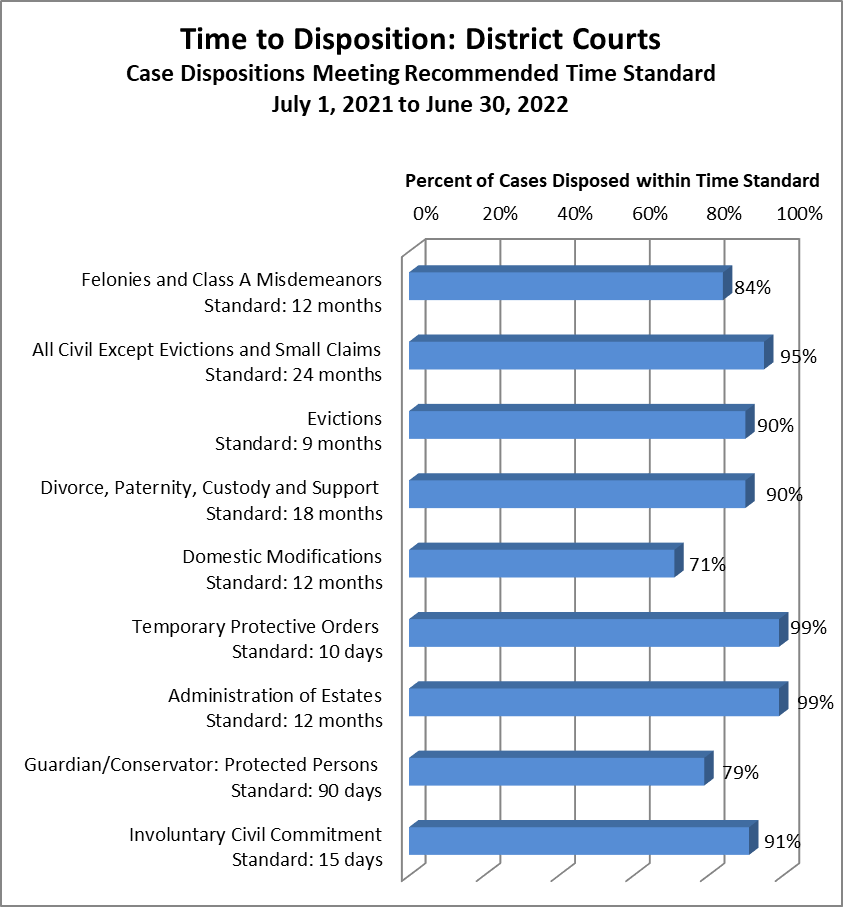
Justice Courts
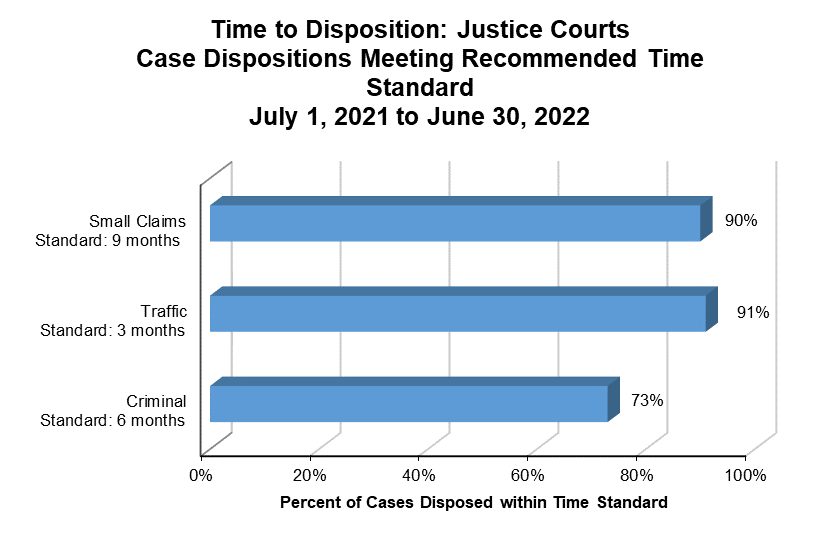
Juvenile Courts
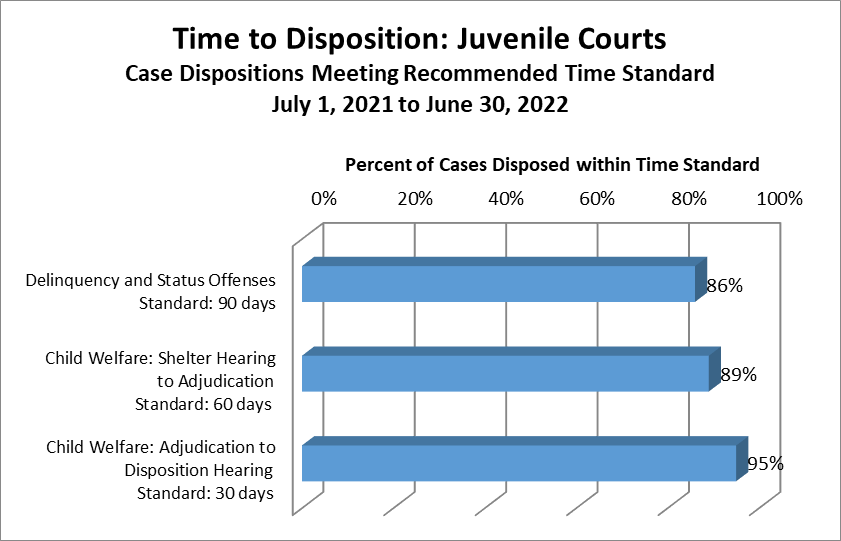
Supreme Court
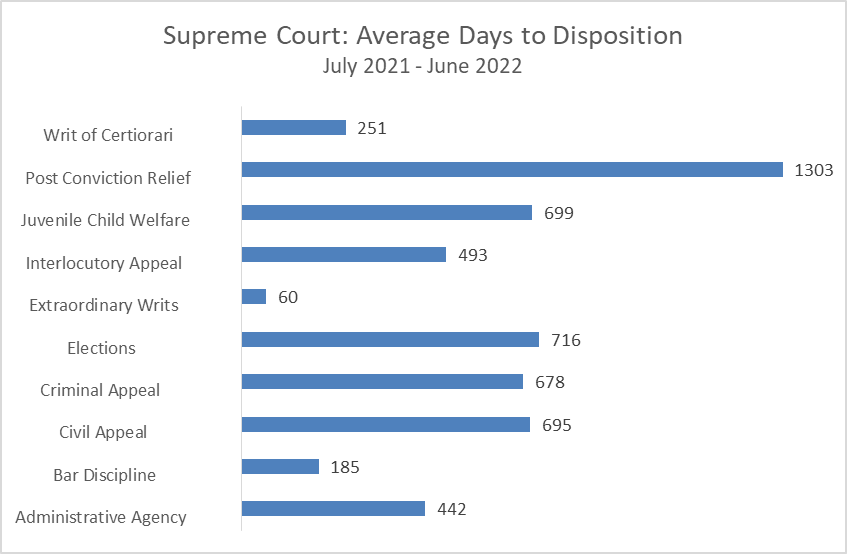
Court of Appeals
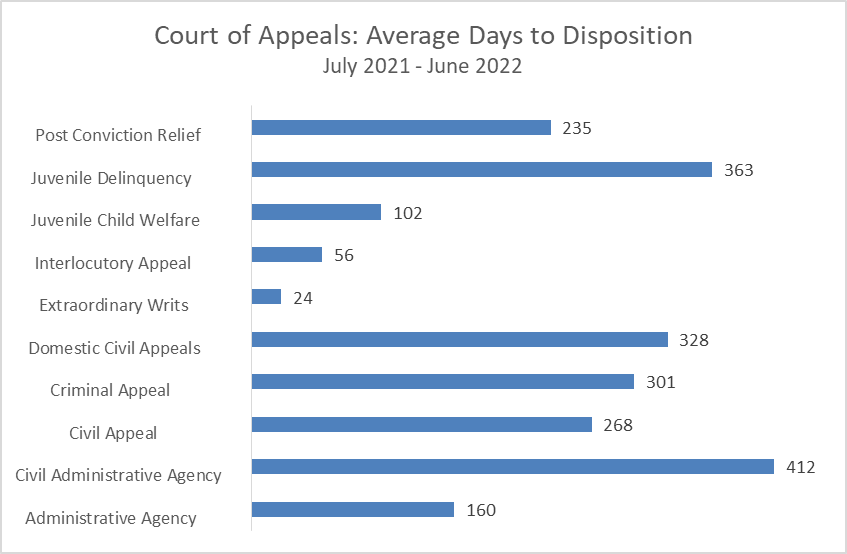
The Utah State Courts mission is to provide the people an open, fair, efficient, and independent system for the advancement of justice under the law.
 Return to Top
Return to Top


